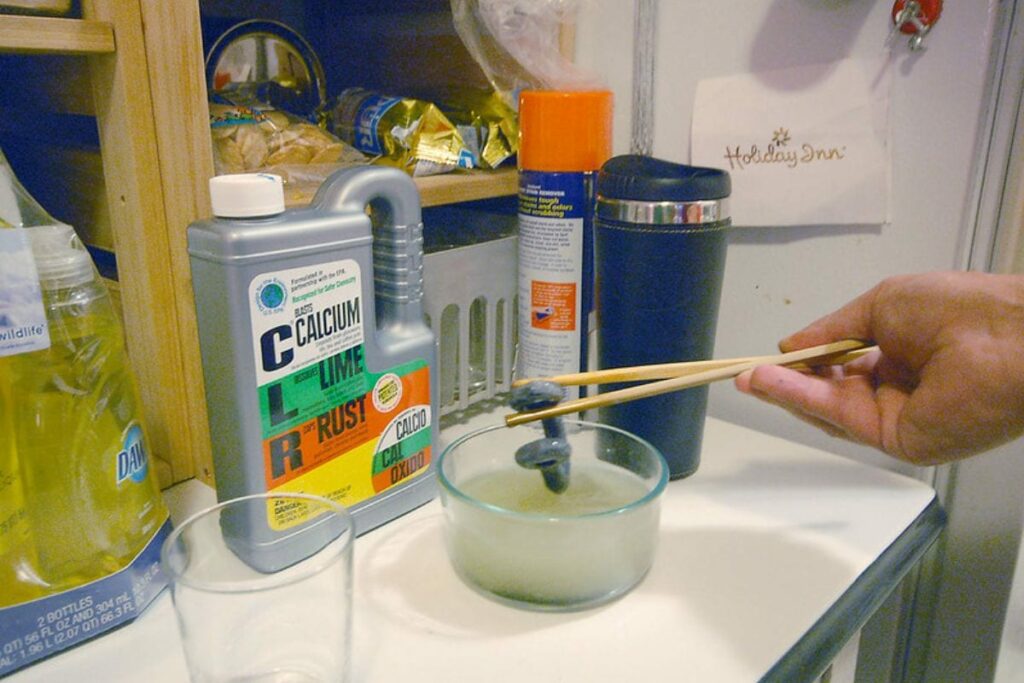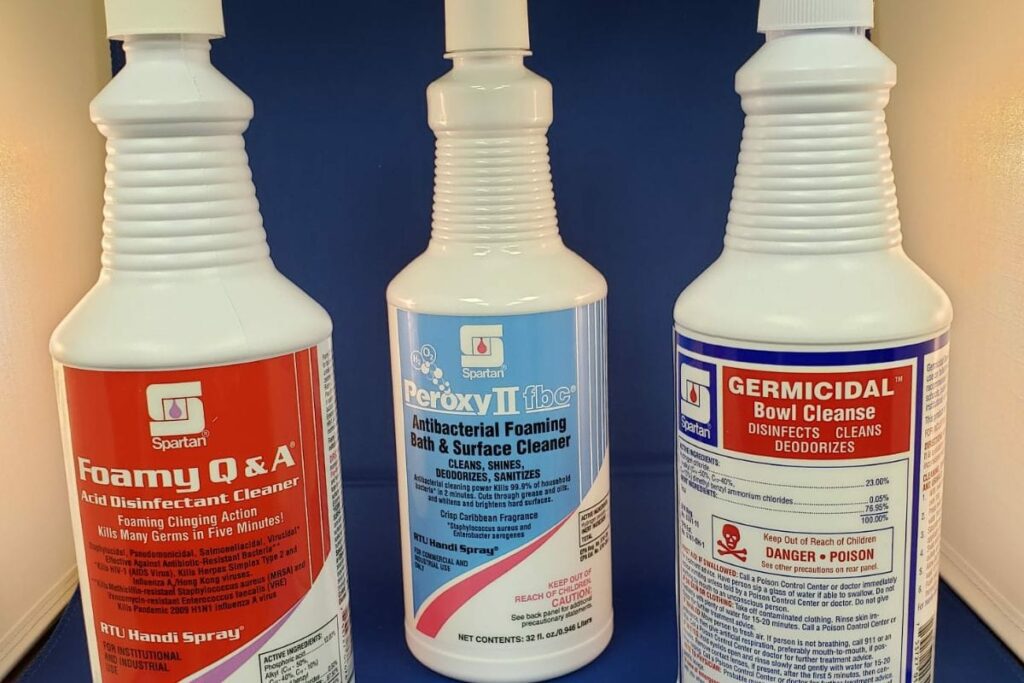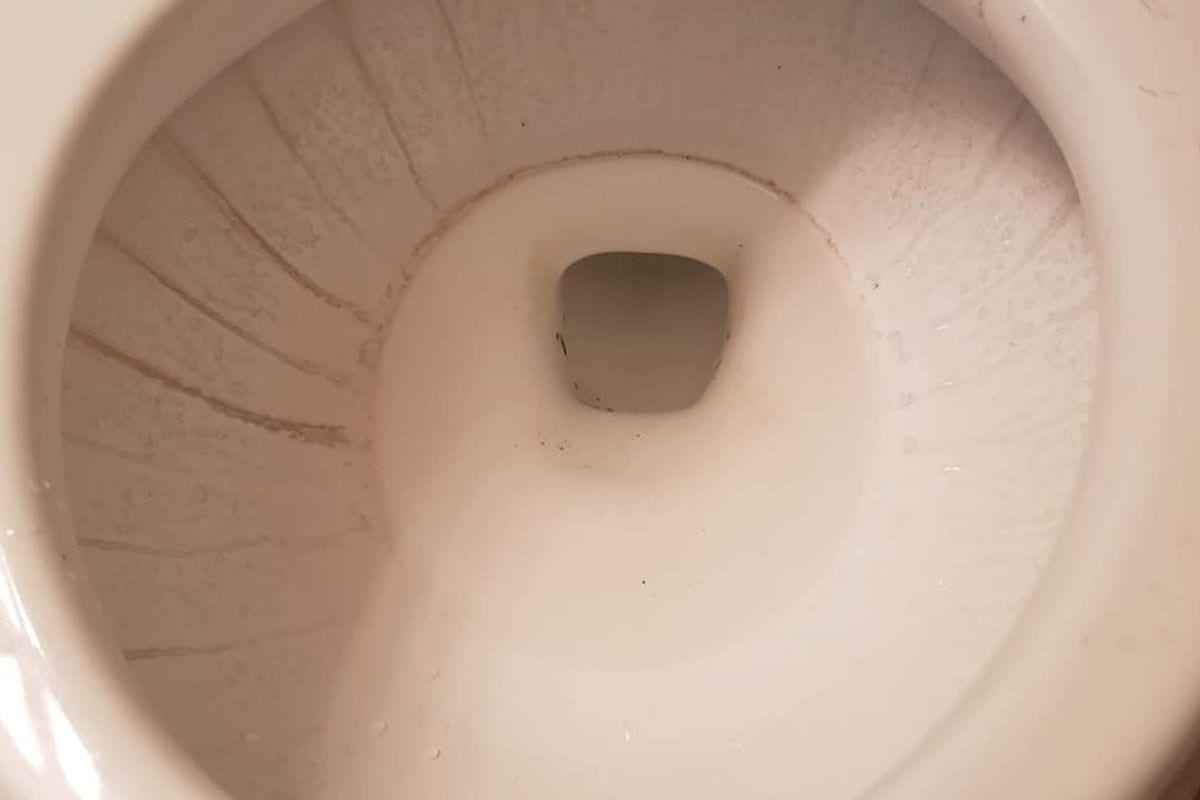Do you ever take a look at your toilet bowl and see all of that white build-up? If so, you are not alone! Calcium build-up is a common problem in toilets. However, you should get rid of it in the first place before it affects the toilet’s function.
One of the most common causes of calcium buildup in toilet bowls is hard water. When water contains a high amount of minerals, it can leave behind deposits as it dries. Similarly, if you know that your house receives hard water, then a lack of proper cleaning results in the build of calcium scales in a toilet bowl. To get rid of calcium deposits you can use homemade cleaners such as vinegar, lemon juice, or a strong chemical cleaner like CLR.
Further, in this article, we will look into the details of how calcium gets deposited in the toilets, and how you can get rid of it. Finally, we will discuss the measures you can adopt to prevent calcium scaling.
What causes Calcium to Build up in toilet Bowls?
People often confuse rust stains with calcium buildup. The rust stains, which are due to the presence of iron in water, form an orange-brownish ring along the bowl periphery. Whereas, the calcium/limescale form a white chalky layer near jet holes on the rim and mostly at the bottom of the bowl.
The build-up of calcium or limescale is a side effect of water that is enriched with minerals (calcium, magnesium, chlorine) i.e. hard water. If a house receives hard water, you would find calcium deposits not only in toilet bowls but also in sinks, tubs, pipes, etc.
Hard Water:
Hard Water is the primary factor in the formation of calcium scales. Since 85% of America’s water is hard, so it is one of the common problems that most Americans have to face.
The chemical story behind it is very simple. When hard water evaporates, it leaves behind an insoluble impurity, calcium carbonate. It solidifies on the bowl’s porcelain. Over time, as its quantity increases, it forms a thick white chalky layer that is quite visible. This is what we call calcium buildup, calcium scale, or limescale.
The calcium scales don’t form overnight. You may feel like that happened overnight because you just noticed them. However, the scaling is a slow process because water evaporates at a slower pace as it is not being heated.
Lack of Cleanliness:
If you know that your household water supply is hard, still you don’t clean it regularly. Then, it is your fault why the toilet bowl gets scaled up with calcium.
You should clean the bowl with a brush at least once a week. If you don’t do that and let the calcium, magnesium, and other minerals stay there, they will slowly solidify and form scales.

How do calcium deposits affect the Toilet’s function?
Calcium deposits make toilet bowls look much older and uglier than they are. In fact, someone can even assume that the owner practices bad hygiene because of them.
Moreover, calcium deposits can clog the jet holes on the rim of the toilet. Jet holes are tiny holes along the bowl’s rim through which the tank’s water enters the bowl. When these holes get clogged with limescale, you experience a slow-flushing toilet.
Similarly, toilets that have siphon jets at bowl bottoms also get clogged if a great amount of calcium scaling takes place.
How you can get rid of calcium deposits from toilets?
Calcium deposits are basic in nature. So, to dissolve them you will need acidic products. You can use some readily available products like vinegar (acetic acid) to clean them. Or you can take the aid of a chemical cleaner like CLR (Calcium, Lime, and Rust) remover.
Method 1: Use Natural Cleaners like Vinegar
For cleaning off calcium scales from toilet bowls, follow the mentioned steps.

Step 1: Shut-Off Water Supply
The first involves cutting off the water supply to the toilet tank. For that, you need to locate the shut-off, which is at the toilet’s back, and turn it clockwise.
Step 2: Drain Water from the Tank
Next, take off the tank’s cover, and flush it. Remove any water from the tank with a sponge. We are emptying the tank since we need to open the clogged jet holes.
Step 3: Drain Water from the Bowl
Next, you need to force all of the water in the bowl to drain. You can use a plunger to force the water. However, for removing the residual water, use a cloth a sponge it out. Don’t forget to wear gloves while doing the job.
We are doing so to expose the calcium deposits at the bottom of the tank.
Step 4: Pour Vinegar into the Tank and Bowl
Pour a few cups of vinegar into the tank, and flush it. As it passes through the clogged jet holes, it will dissolve any deposited calcium scale there.
Next, pour a few cups of vinegar into the bowl. Make sure all the calcium scaling is completely soaked in a vinegar solution. Let it stay there for an hour.
Step 5: Scrub the scales with a Brush
After an hour, scrub the scales with a toilet brush. Swirl the brush all around the toilet. Some people also recommended using baking soda at this stage. This gives the toilet a shiny appearance, and it dissolves vinegar and calcium deposits.
Also, scrub the brush underneath the rim, and on the jet holes.
Step 6: Turn On the supply and Flush Several Times
After you have finished the cleaning job, the next step is to turn on the supply. Just turn the shut-off counterclockwise.
Wait for the tank to refill. Flush twice or thrice until all vinegar and calcium solution has passed down the drain.

Method 2: Use Chemical Cleaners
Just like vinegar, you can also use chemical cleaners available on the market to get rid of calcium scales. You can use an acid like dilute sulfuric and hydrochloric acid, or cleaning products like CLR
The procedure is pretty much the same. However, this time you don’t need to pour the chemical down the tank. Instead, just empty the toilet bowl, and pour the cleaner along the sides of the bowl. Scrub with a brush and flush. The chemical cleaners are expensive but they perform the cleaning job in a few minutes.
How to prevent Calcium buildup in the toilet bowl?
Prevention is always better than cure. So, if you want your toilets to stay calcium-free, you can take these prevention measures.
Install a Water Softener
Since hard water is the main source of calcium deposits, you need to install a water softener to get rid of hard water. A water softener system not only prevents the calcium scales on the just toilet but all water-based equipment, like sinks, tubs, faucets, etc.
Water softeners work on the principle of ion exchange. In this process, hard water’s calcium and magnesium ions are exchanged with sodium or potassium ions. As a result, you get soft water that doesn’t form any scale.
Deep Clean Toilet every 6 Months
Follow a good cleaning routine for your toilet. It will help in preventing limescale as well as other germs and bacteria.
Try to give your toilet a deep clean every six months. Clean all parts with vinegar or any other strong cleaner. Doing this will help in getting rid of any early-stage calcium scale.

Use Lime-scale Inhibitors
Lime-scale inhibitors are the chemicals that are added to the water so that it doesn’t form any scale. You can either add these chemicals to your water tank or use them while cleaning the bowl.
Keep Toilet Dry
Keeping the toilet dry also helps in preventing calcium buildup. This prevents the evaporation of water on the surface and therefore, less calcium deposition.
When you flush the toilet, the water first makes its way around the rim of the bowl, and then it goes down into the bowl. During this time, limescale accumulation is caused by the evaporation of water dripping from the toilet jets.
We strongly suggest using a toilet brush to scrub the lip of the bowl in order to remove any surplus water that may have been left behind by the jets.
Final Words
Calcium buildup in the toilet bowl is a common problem. However, it is not very difficult to get rid of it. You can use either vinegar or any chemical cleaner to remove the scales. Or, you can take some preventive measures to stop the formation of calcium scales. Either way, you can keep your toilet clean and shining.

Amos Christen graduated with a bachelor’s degree in Interior Design from Drexel University — Philadelphia, PA. Since 2003, Amos has worked with top interior design professionals in this area, including architects and interior/graphic/lighting designers. As a skilled interior designer, Amos Christen is highly versed in fine arts and crafts and uses that to supplement his main area of expertise. He often publishes articles related to home décor on several websites, including Sprucetoilets.com, Sprucebathroom.com, and Mybesuitedhome.com. He also contributes to leading interior design magazines.
